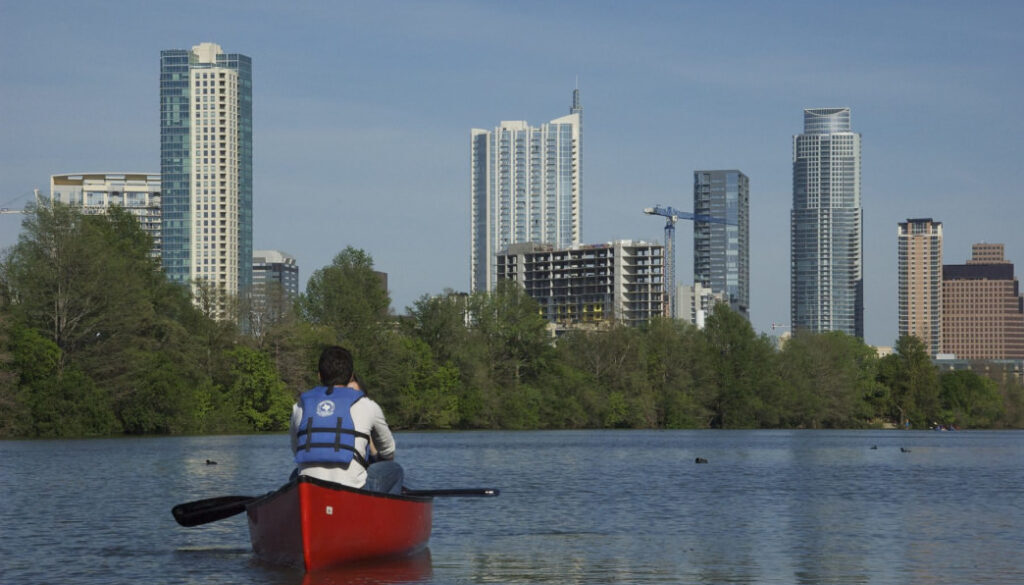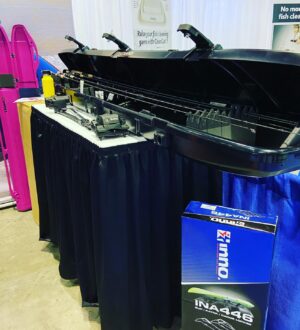Paddling Texas
Interview with Author Shane Townsend
Shane Townsend, senior advisor with The Meadows Center for Water and the Environment at Texas State University, just completed Paddling Texas: A Guide to the State’s Best Paddling Routes, the newest addition to Falcon Guides’ popular paddling series.

Dave Brown
As both disclaimer and a vouch for him, I’ve known Shane personally for some time, and I was a contributor to his book. I met him while in the Texas Master Naturalist program, have since worked with him on various projects, and we are friends. I highly respect him as a true outdoorsman. And when it comes to paddling, he knows what he’s talking about. Following are some snippets from our recent conversation about Paddling Texas:
Q: Why do you like paddling, and why would you recommend paddling instead of motoring?
A: My earliest memory in life was sitting in the bottom of a canoe. From the time I was seven years old, my dad and I were taking five-day trips down the rivers throughout Mississippi. It was something we always did. It’s always been a way of life for me.
There are so many places that are 100-percent inaccessible by any other means. You can’t walk to them, or swim to them, or take a motorized boat to them because of either boat draft or laws.
While paddling, you become part of the landscape more easily. You can sneak up on deer – close enough to touch them – same with turkey, ducks, other birds, and fish. And you catch a lot more fish because you don’t scare them off with a motor. Basically, it’s like going for a walk, just on water.
Q: What are your Top 3 favorite paddling trails around Austin?
A: First, in Austin proper, Ladybird Lake from Redbud Isle to Barton Creek and back. Even in the middle of town, this is an absolutely beautiful paddle – 200-foot bluffs, fantastic fishing, all of it. And there aren’t motorboats running over you. My second top pick would be Bastrop, the lower Colorado river, from Bastrop River Company to the Lost Pines recreational trail. It’s such a peaceful route, less than an hour from Austin. And third, I would have to say Inks Lake, from the main launch to Devil’s Waterhole and back. That entire area around there is absolutely beautiful.
Q: Without giving away the entire book, what are the best tips you’d give for paddling in Central Texas?
A: The biggest misperception about paddling is that you need lots of expensive gear. In all honesty, I did most of the paddles for my book in a $500 kayak with a $100 paddle, in fresh and saltwater, rivers and lakes. You really don’t need that much. Anything beyond what keeps you safe is just a bonus.
Know the laws for paddling navigable waters in Texas, so you don’t find yourself in a tight spot with landowners. While there’s public access to water, there are also private land rights. And most of Texas land is privately owned. If paddlers aren’t conscientious, we can put ourselves in tight situations.
Plan what you’re going to do. Look at weather forecasts. Even if we don’t get a flash flood, which is one of Central Texas’ biggest threats on waterways, we can get winds that pick up heavily. If you get a strong headwind, you will do a long walk instead of paddling, in addition to lightning and other threats. So research the latest weather forecasts before shoving off.
Study maps of where you’re going. Maps are online. Take a GPS and a phone. The U.S. Coast Guard also has float-plan templates online.
Let someone know where you’re going and get back to them when you’re back.
Wear protective footwear. You may always have to walk at some point, often on sharp rocks, shells or rough trails.
Bring plenty water, sunscreen, and bug repellant. You will be outside for a long time, often without shade or access to drinking water and around bugs, in their environment.
Always try to go with a partner.
Most waterways in Texas go underutilized in winter. Take advantage of that. It’s beautiful and quiet in winter.
Q: Why did you write this book? A: The book is a guide for people who are new either to Texas or to paddling, or for those who already love both. It introduces people to Texas waterways and gives them practical tips for paddling, either canoe or kayak. The trips I feature offer easy access, secure environments, good facilities, great fishing, superb wildlife viewing and beautiful scenery. So generally, the book gives recreational paddlers and anglers all the information they’ll need to paddle many of the best trips in the state.
Readers can order Paddling Texas from Amazon here, or visit www.PaddlingTexas.com. The book will be available at local bookstores this November (2014).
Written by Dave Brown for RootsRated.
Featured image provided by PaddlingTexas.com




